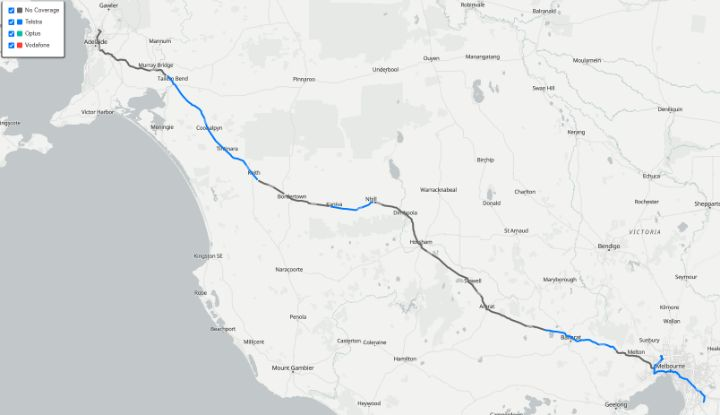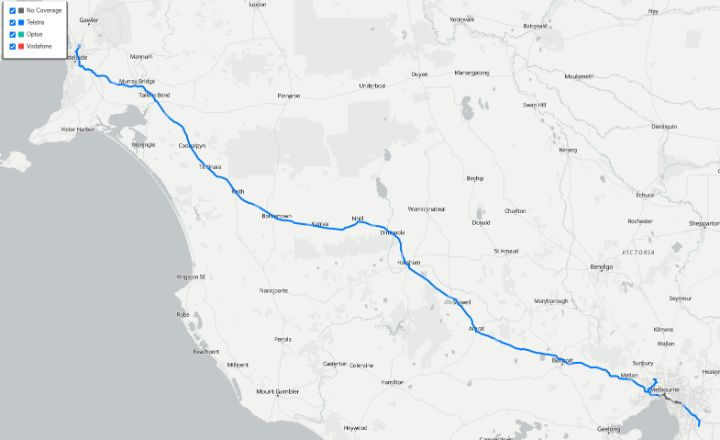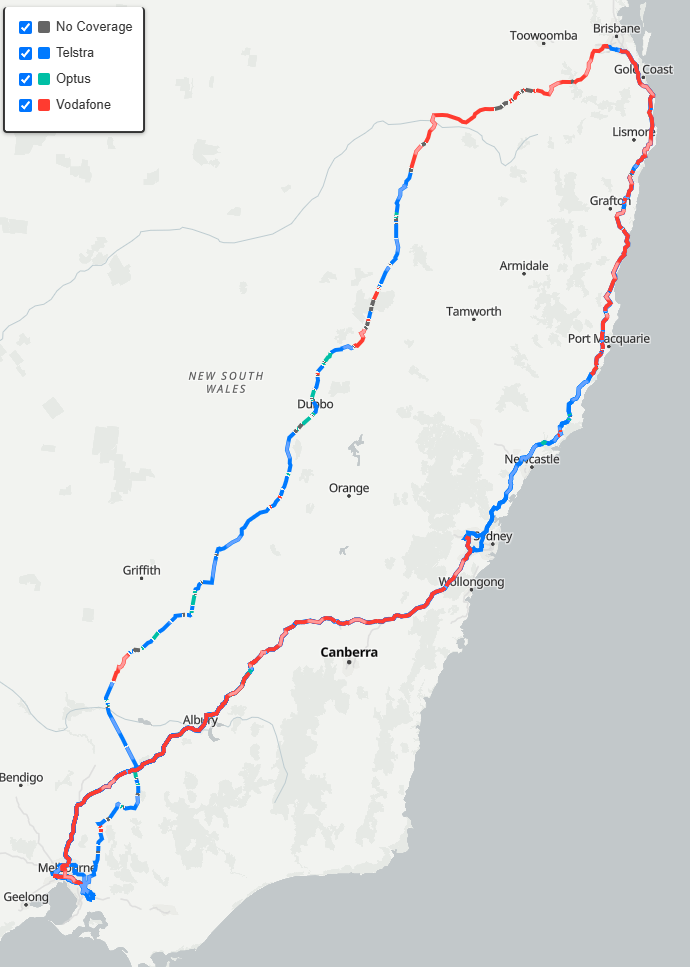When comparing GPS trackers, one critical but often overlooked factor is the type of cellular network technology they use. You may have seen terms like Cat-M1 (LTE-M), Cat-1, or NB-IoT, but what do they really mean and how do they impact real-world GPS tracking?
In this article, we break down these network types, compare their strengths and limitations, and explain why CoreGPS uses Cat-1 with multi-network roaming SIMs to ensure the most reliable GPS tracking experience across Australia.
What is Cat-M1 (LTE-M)?
Cat-M1 is a specialised LTE technology developed for low-power, low-bandwidth IoT devices. It's part of the LPWAN (Low Power Wide Area Network) family, designed to support use cases where devices report data occasionally and need to operate for extended periods on battery power.
✅ Benefits:
- Low power consumption
- Good signal penetration
- Optimised for small, infrequent data packets
❌ Limitations:
- Limited to Telstra only in Australia
- Lower data throughput
What is NB-IoT (Narrowband IoT)?
NB-IoT is another LPWAN technology designed for ultra-low-power, stationary IoT applications. Like Cat-M1, it supports long battery life and strong coverage, but is better suited to fixed-location devices with minimal data needs.
✅ Benefits:
- Ultra-low power consumption
- Excellent signal penetration
- Supported by Telstra, Optus, and Vodafone in Australia
❌ Limitations:
- Very low data throughput
- High latency — delayed message delivery
- Limited mobility support — not ideal for moving assets with high frequency updates
What is Cat-1?
Cat-1 is a full-feature LTE category intended for higher bandwidth mobile devices. Unlike Cat-M1 or NB-IoT, it supports higher data rates, making it ideal for real-time GPS tracking and moving vehicles.
✅ Benefits:
- Higher data throughput — ideal for frequent, real-time updates
- Available on all major networks in Australia: Telstra, Optus, and Vodafone
- Uses the same 4G infrastructure as smartphones
❌ Limitations:
- Slightly higher power consumption (not a concern for hardwired devices)
- Slightly less signal penetration than Cat-M1 or NB-IoT
Which One Should You Choose for GPS Tracking?
When it comes to GPS tracking, network technology directly affects performance, reliability, and coverage.
✅ Choose Cat-M1 if:
- You need a battery-powered tracker with minimal updates
- Your asset is stationary or moves infrequently
- You’re comfortable relying on Telstra only
✅ Choose Cat-1 if:
- You want real-time tracking with realtime updates
- Your asset is frequently moving, e.g. vehicles
- You need multi-network coverage (Telstra, Optus, Vodafone)
- You want turn-by-turn tracking accuracy
⚠ Use NB-IoT cautiously for GPS tracking:
- Suitable for low-frequency, battery-powered GPS devices with infrequent updates
- Not recommended for real-time tracking or fast-moving assets due to high latency and limited mobility
Real-World Field Data
In a recent test, one of our test Cat-M1 devices experienced hours of lost connectivity during a Melbourne to Adelaide trip.

The next day, on the same route returning back to Melbourne, the same device had full coverage — indicating it was a temporary location specific outages on Telstra’s network.

These outages can go unnoticed by regular mobile users (since voice/data works fine), but they silently disrupt GPS trackers relying on Cat-M1.
By contrast, here's a round trip from Melbourne to the Gold Coast utilising a CoreGPS Cat-1 GPS tracker seamlessly switched between all three major Australian networks. This significantly reduced coverage blackspots and helped maintain consistent connectivity throughout the journey.

► See another coverage detailed article here:
Roaming SIM GPS Tracking Coverage Analysis (Australia)
Summary: Which Technology is Best?
| Feature | NB-IoT | Cat-M1 (LTE-M) | Cat-1 |
|---|---|---|---|
| Power Efficiency | ⭐⭐⭐⭐⭐ | ⭐⭐⭐⭐ | ⭐⭐⭐ |
| Data Speed | ⭐ | ⭐⭐ | ⭐⭐⭐⭐ |
| Mobility Support | ⭐ (limited) | ⭐⭐⭐ | ⭐⭐⭐⭐ |
| Coverage in AU | Telstra, Optus, Vodafone | Telstra only | Telstra, Optus, Vodafone |
| GPS Tracking | ⚠ Limited use cases | ⚠ Limited use cases | ✅ Ideal choice |
Final Thoughts
While Cat-M1 and NB-IoT are excellent for low-power, low-traffic IoT applications, GPS tracking demands speed, mobility, and coverage.
NB-IoT and Cat-M1 are best suited for battery-powered GPS devices with low update frequencies, where power efficiency and extended life are critical.
For real-time or high-frequency updates, a hardwired Cat-1 solution offers the best reliability, coverage, and performance.
That’s why we use Cat-1 with multi-network roaming SIM cards at CoreGPS. The only solution that provides the best possible coverage, and delivers reliable, accurate, real-time tracking across Australia.
📲 Have questions?
Feel free to contact us if you'd like to chat about what technology is best for your tracking needs.